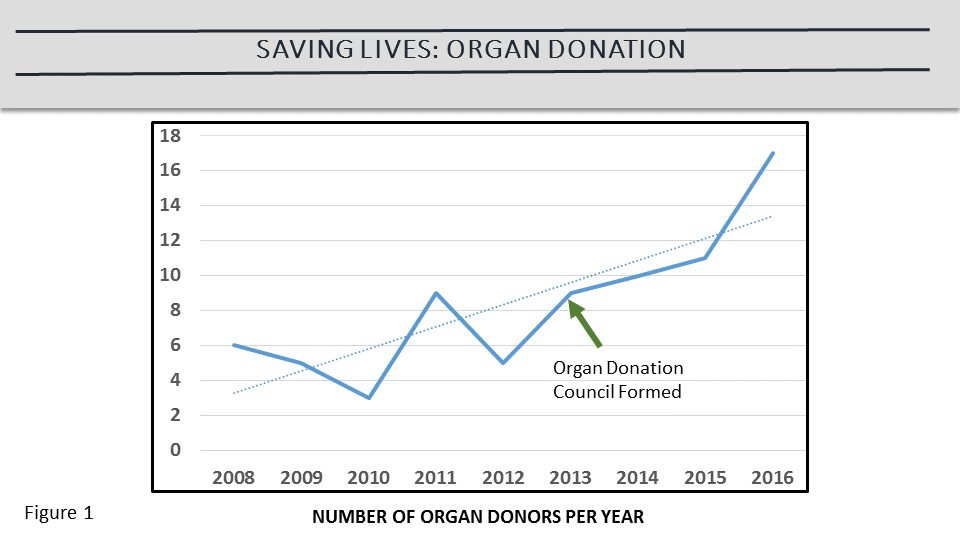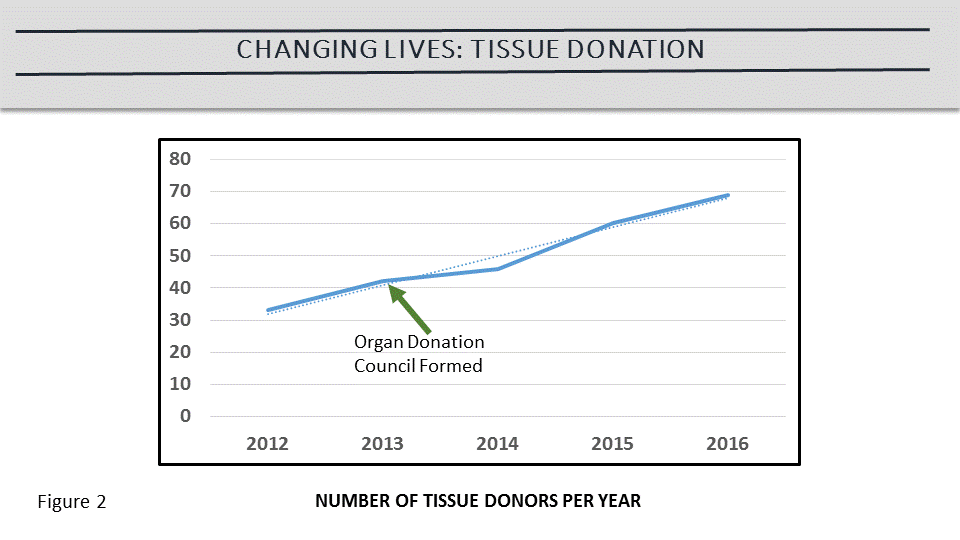Change the Hospital Culture - Make Donation Routine
Rosemary OMeeghan1.
1Critical Care Medicine, Hoag Memorial Hospital Presbyterian , Newport Beach, CA, United States
Objective: Recognition of the continued large transplantation waitlist led to appreciation of the lack of cohesive process and ownership of donation related activities in the hospital. The goal was to form a hospital based organ, eye and tissue donation council to best serve the patients, the community and develop a culture of donation in the hospital. Once established, the council would serve as a platform for shared best practice and innovation in donation related activities and education.
Method: With administrative support, a multidisciplinary organ, eye and tissue donation council was formed. Mission and vision statements were crafted and the related policy and procedure overhauled. Ownership for all donation related activities was to reside with the council. Workplace engineering and process improvement methodology was applied and subject matter experts were identified for each part of the donation process. Reference workflows were created and all associated procedure and data information was placed on line. Quarterly council meetings were scheduled with targets for work completion. A standard organ donation case debrief form was created with the intent for continuous process improvement. Throughout this process, a strong collaboration and partnership developed with the local organ procurement organization
Results / Discussion: Since formation of the council over four years ago, a culture supportive of donation has developed. A donor family and a high level administrator regularly participate in the meetings. There is wide staff interest in participation in donation council activities at all levels, including promoting donation education in the community. Utilization of performance improvement tools has led to improved donation and transplantation opportunities, of benefit to the hospital and our community. (Reference diagram 1, 2). Funding from the hospital foundation has supported the council chair and nurse champions to attend conferences where oral and poster presentations have been made. The hospital donor council model has become a leader in the local community. Tools for best practice have been shared and implemented with other local hospitals.

Conclusions: A physician led, multidisciplinary organ, eye and tissue donation council, with a basis in performance improvement, is a powerful and effective model to promote and enhance a culture of donation in the hospital. Donation may be infrequent, but the process is ideally organized and managed in a comparable manner to any other “diagnosis”. Strong administrative support and partnership with the local organ procurement organization is essential. Smart strategy, with built in program maintenance leads to success. The small size of the hospital has not been a barrier to the model providing leadership in the local area. The increased organ and tissue donation rates demonstrate the success of the program.
